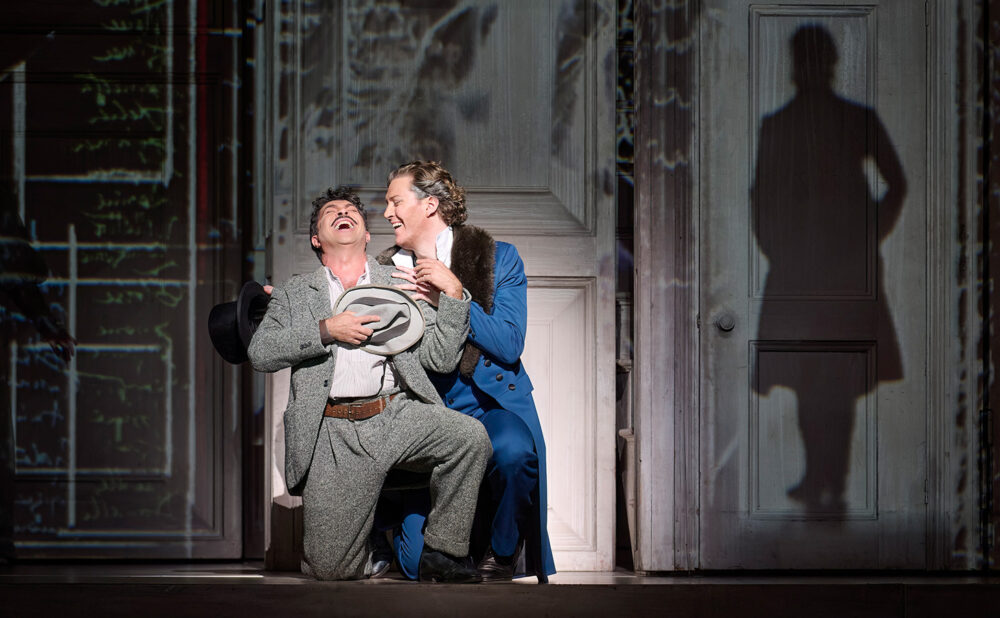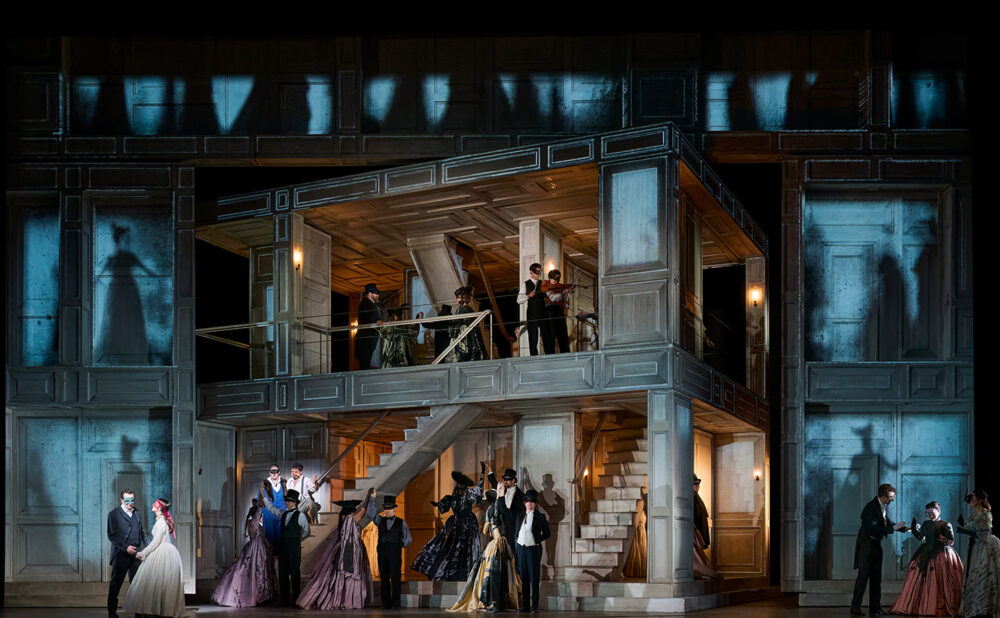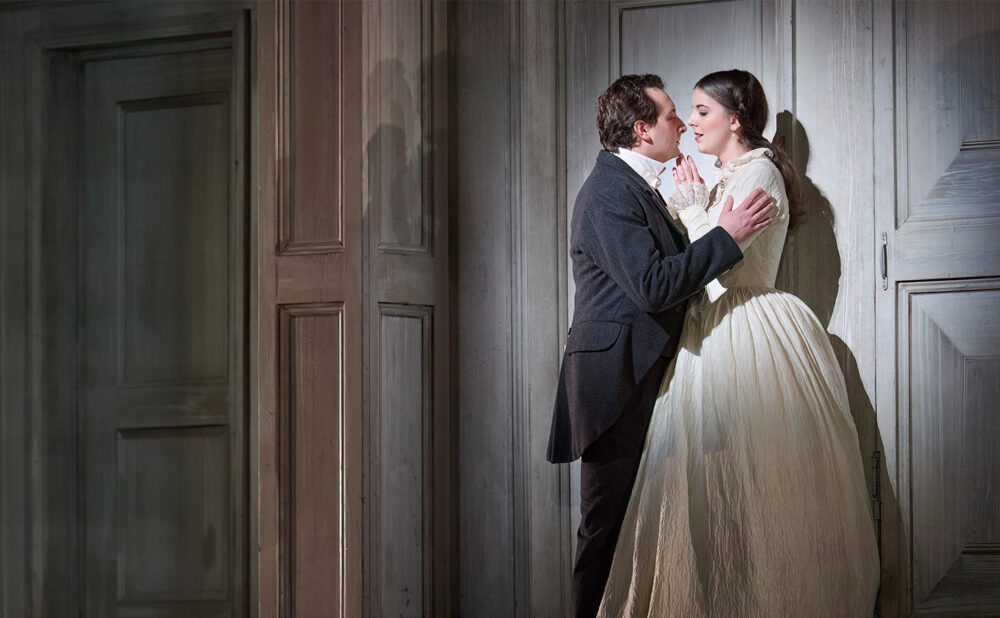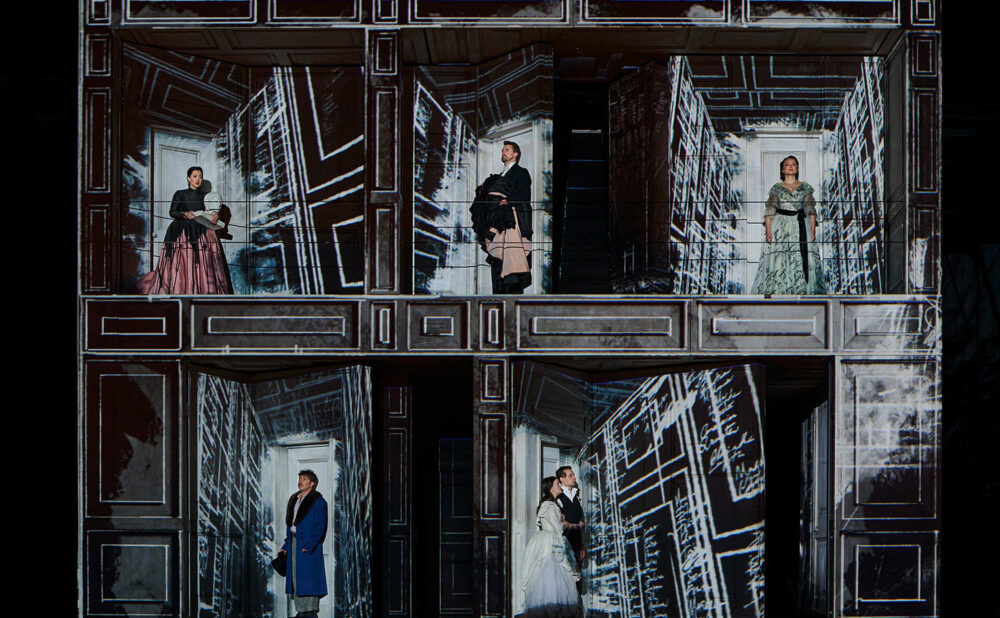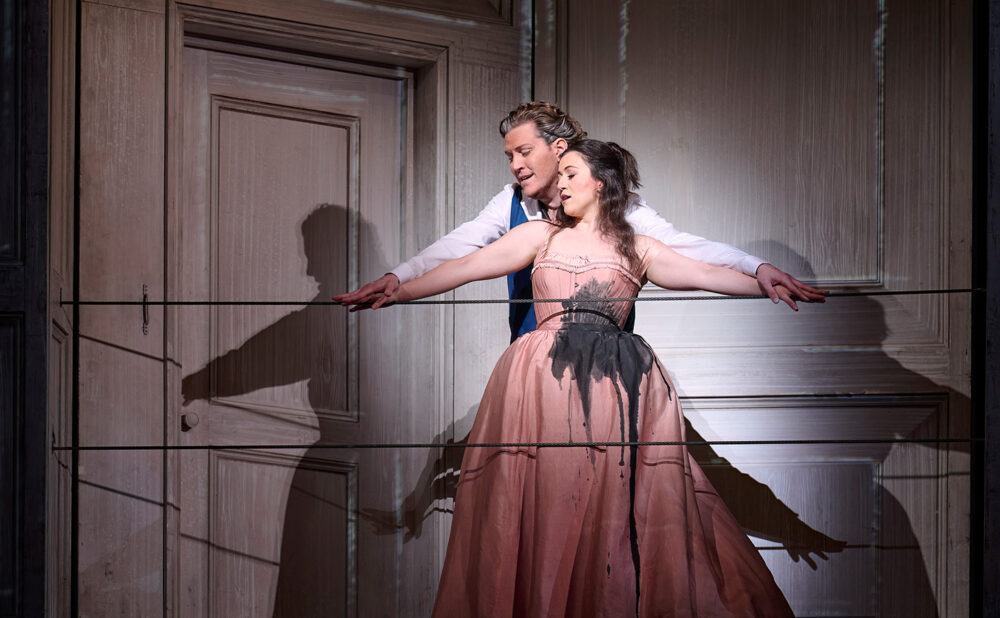Review: COC’s ‘Don Giovanni’ has something for everyone
Danish director Kasper Holten brings fresh aesthetic to Mozart’s opera
What: Don Giovanni
Where: Four Seasons Centre for the Performing Arts, 145 Queen St. W.
When: Now, until Sat., Feb. 24
Highlight: Es Devlin’s mammoth set
Rating: NNNN (out of 5)
Why you should go: It’s a lively, crowd-pleasing Don Giovanni with something to please all tastes.
AS I LEFT the Canadian Opera Company’s (COC) new production of Don Giovanni, my Gen Z seatmate, who’d never seen a live opera before, offered a four-word response: “That was so fire.”
It’s hard to disagree.
Danish director Kasper Holten’s take on Mozart’s opera is visually daring. Dramatically, however, it tends toward the traditional. The result: a lively, crowd-pleasing Don Giovanni with something for everyone (though perhaps everything for no one).
The work of projection designer Luke Halls is at first quaint. As Johannes Debus leads the ever-solid COC orchestra through the opera’s roving overture, the names of the titular villain’s (Gordon Bintner) 2,065 lusty conquests appear in cursive — a reference to the list kept by the nobleman’s buffoonish servant Leporello (Paolo Bordogna).
But by the opera’s end, the projections reach a kind of maximalism, embracing abstraction and overwhelming the senses. In between, Giovanni’s mind descends into chaos, a journey that begins when he kills the Commendatore (David Leigh), father of Donna Anna (Mané Galoyan), the murderer’s latest romantic target.
Acclaimed British set designer Es Devlin contributes to this slide toward madness with a playing space that gradually becomes more claustrophobic, trapping Don Giovanni like a hamster in an endless maze. An all-white multi-storey cube, it spins centre stage until his time runs out. Halls’ projections coat this sky-scraping canvas even as it moves, an impressive feat of design unlike anything common to Toronto theatre.
Musically, this Don Giovanni is pointed and triumphant. Bintner’s take on the title role is cutting, his voice a natural extension of the character’s springy, overconfident strut. Galoyan’s soprano stuns, remaining open even when Donna Anna is closed off. And Leigh stands out from the supporting cast with a wondrous, razor-sharp bass.
If there’s a bump in Holten’s interpretation, it’s the arc. The beginning and end of Don Giovanni’s psychological journey resonates, but the middle is fuzzier. Holten’s staging gets more expressionistic as it goes on, a popular move that makes sense here, yet sometimes these increases in theatricality occur abruptly or at strange moments, making them distracting — the theatrical rules of the production’s world are not as consistent as they might be.
But the climaxes? The iconic moments? All satisfyingly present and well-realized. Though this may not be a Don Giovanni for the ages, it’s plenty good for right now.
Click here for more information.

